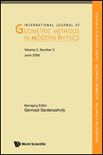
INTERNATIONAL JOURNAL OF GEOMETRIC METHODS IN MODERN PHYSICS
Scope & Guideline
Innovative Perspectives on Geometric Methods in Physics
Introduction
Aims and Scopes
- Geometric Analysis in Physics:
The journal covers the application of geometric analysis to various physical theories, including general relativity, quantum mechanics, and cosmology, providing insights into the geometric structure of physical theories. - Wormhole and Black Hole Physics:
A significant focus is placed on the study of wormholes and black holes, exploring their geometric properties, stability analyses, and implications in gravitational theories. - Modified Gravity Theories:
Research on modified gravity theories, such as f(R), f(T), and other extensions, is a core area, investigating how these theories can address cosmological phenomena and singularities. - Cosmology and Dark Energy:
The journal includes studies on cosmological models, dark energy dynamics, and the geometrical aspects of cosmic expansion, contributing to the understanding of the universe's structure and evolution. - Quantum Gravity and Geometric Quantum Mechanics:
Contributions explore the geometric foundations of quantum gravity, focusing on the interplay between quantum mechanics and geometry, particularly in noncommutative and loop quantum gravity frameworks. - Mathematical Physics and Computational Methods:
The journal also emphasizes mathematical techniques and computational methods applicable in geometric contexts, enhancing the rigor and applicability of geometric methods in modern physics.
Trending and Emerging
- Geometric Dark Energy Models:
There is a rising trend in research focusing on geometric approaches to dark energy models, particularly those that employ holographic principles and modified gravity theories to address cosmic acceleration. - Quantum Information and Geometry:
An emerging area is the intersection of quantum information theory and geometry, where researchers are investigating how geometric methods can enhance our understanding of quantum states and entanglement. - Noncommutative Geometry in Physics:
The application of noncommutative geometry to explore quantum gravity and particle physics is gaining traction, reflecting a broader interest in how geometry can inform fundamental physics at microscopic scales. - Advanced Gravitational Wave Analysis:
Recent publications indicate a growing focus on the geometric analysis of gravitational waves, particularly in the context of their implications for astrophysical phenomena and cosmological models. - Topological Defects in Cosmology:
Research on topological defects, such as cosmic strings and monopoles, is emerging as a significant area, investigating their geometric properties and potential roles in cosmological evolution.
Declining or Waning
- Classical Mechanics Applications:
Research focusing on classical mechanics applications within geometric frameworks has decreased, possibly due to a shift towards more modern applications in quantum mechanics and cosmology. - Standard Model of Particle Physics:
There appears to be a waning interest in studies strictly adhering to the traditional standard model of particle physics, as researchers increasingly explore beyond standard theories to address phenomena like dark matter and dark energy. - Static Solutions in General Relativity:
The exploration of static solutions of Einstein's equations, while still relevant, has seen a decline as dynamic and time-dependent models gain more attention in the context of evolving cosmological scenarios. - Geometric Structures in Low-Dimensional Topology:
There has been a noticeable reduction in publications focused solely on low-dimensional topology and its applications in physics, possibly overshadowed by higher-dimensional theories and their implications.
Similar Journals
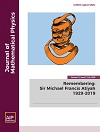
JOURNAL OF MATHEMATICAL PHYSICS
Exploring the intersection of theory and application in physics.Welcome to the JOURNAL OF MATHEMATICAL PHYSICS, a distinguished publication dedicated to the burgeoning fields of mathematical physics and statistical and nonlinear physics, published by AIP Publishing. Established in 1960, the journal continually showcases cutting-edge research and theoretical advancements that drive the understanding of complex systems and mathematical formulations within physics. With an impressive Scopus ranking of #38 in Mathematical Physics and #39 in Statistical and Nonlinear Physics, the journal is recognized for its vital contributions to the academic community, achieving a solid Q2 quartile ranking in both categories for 2023. While not an open-access journal, it remains a critical resource for researchers, professionals, and graduate students seeking insights into rigorous mathematical methods and their applications in physical sciences. Engage with the finest research as we converge toward new frontiers from 1960 to 2024, fostering academic collaboration and innovation.

Symmetry Integrability and Geometry-Methods and Applications
Illuminating the Path of Analysis, Geometry, and TopologySymmetry Integrability and Geometry-Methods and Applications is a prominent open-access journal published by the NATIONAL ACADEMY OF SCIENCES OF UKRAINE, INSTITUTE OF MATHEMATICS, dedicated to advancing research in the fields of Analysis, Geometry and Topology, and Mathematical Physics. Since its inception in 2005, the journal has provided an esteemed platform for scholars from around the globe to share their innovative findings and methodologies, contributing to our understanding of complex mathematical concepts. With an impressive Q2 ranking in all three mathematical categories as per the 2023 Scopus rankings, the journal positions itself as a key resource for researchers seeking high-quality, peer-reviewed content. As a fully open-access publication, it ensures that research is readily available to a wide audience, fostering collaboration and knowledge exchange in the mathematical sciences.
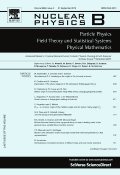
NUCLEAR PHYSICS B
Exploring the Frontiers of Nuclear ResearchNUCLEAR PHYSICS B, published by Elsevier, stands at the forefront of research in the dynamic field of Nuclear and High Energy Physics. Established in 1967, this prestigious journal has developed a reputation for excellence, now positioned in the Q1 category according to its 2023 quartile rankings. With an impressive Scopus rank of #21 out of 87 in its category and a commendable 76th percentile, it serves as a vital resource for scholars investigating the underlying principles of nuclear interactions and particle physics. The journal transitioned to an Open Access model in 2014, ensuring that groundbreaking research is accessible to a global audience. Its commitment to quality and innovation makes NUCLEAR PHYSICS B an essential platform for researchers, professionals, and students aiming to stay at the cutting edge of discoveries in this expansive field, contributing to the scientific discourse for nearly six decades.

Annals of Physics
Advancing the frontiers of Physics and Astronomy.Annals of Physics is a premier journal published by Academic Press Inc Elsevier Science, specializing in the expansive field of Physics and Astronomy. Since its inception in 1957, this journal has played a pivotal role in disseminating high-quality research and advancements across various sub-disciplines of physics. With a notable impact factor making it rank in the Q1 category for 2023, it stands among the top tier of scholarly publications, specifically sitting at Rank #63 out of 243 in the field, placing it in the 74th percentile according to Scopus metrics. Researchers are encouraged to submit their findings to reach a broad audience without the constraints of Open Access fees, promoting extensive visibility within the academic community. As we look ahead to 2024, Annals of Physics continues to be an essential resource for professionals, students, and academics striving to advance the frontiers of knowledge in physics and astronomy.
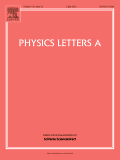
PHYSICS LETTERS A
Catalyzing Academic Exchange in PhysicsPhysics Letters A is a renowned scientific journal published by Elsevier, dedicated to the field of physics and astronomy. Established in 1963, it has continuously evolved, offering a platform for the swift dissemination of significant research findings in various branches of physics. As of 2023, it holds a commendable Q2 ranking in the category of Physics and Astronomy (miscellaneous) and ranks 69th out of 243 journals in the same domain according to Scopus, positioning itself in the 71st percentile of academic impact. With its comprehensive scope, Physics Letters A provides a vital resource for researchers, professionals, and students, facilitating academic discourse and advancing knowledge across the field. Although it does not currently offer Open Access options, its rigorous peer-review process ensures high-quality content. It is centrally located in Amsterdam, Netherlands, and continues to be an essential outlet for innovative contributions to the physics community through the year 2024 and beyond.
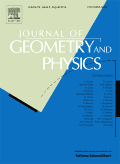
JOURNAL OF GEOMETRY AND PHYSICS
Enhancing Our Understanding of the Universe Through GeometryThe JOURNAL OF GEOMETRY AND PHYSICS is a distinguished peer-reviewed journal published by Elsevier, dedicated to fostering the exploration and dissemination of research at the intersection of geometry and physics. Established in 1984, this journal covers a broad range of topics, including the theoretical aspects of geometry, topology, and mathematical physics, making it an essential resource for researchers and practitioners in these fields. With an impressive Q2 ranking in various categories, including Geometry and Topology, Mathematical Physics, and General Physics and Astronomy, the journal ranks among the top 25% of its peers, reflecting its significant impact in advancing relevant discourse. Although currently not offered as an open-access publication, it maintains a strong readership due to its contribution to high-quality scholarly articles and critical reviews. The journal’s commitment to stimulating innovative research continues to solidify its reputation as a pivotal platform for exchanging ideas and fostering collaboration within the scientific community.

REVIEWS IN MATHEMATICAL PHYSICS
Exploring the Frontiers of Mathematical PhysicsREVIEWS IN MATHEMATICAL PHYSICS is a premier scholarly journal published by WORLD SCIENTIFIC PUBL CO PTE LTD, focusing on the versatile and dynamic field of mathematical physics. Established in 1996, this journal has quickly become a pivotal resource for researchers and professionals seeking in-depth analyses and reviews of contemporary advancements in both mathematical and statistical physics. With an impressive categorization in Q2 for both Mathematical Physics and Statistical and Nonlinear Physics as of 2023, it ranks among the top in its field, boasting a Scopus Rank of #27 in Mathematical Physics and #29 in Statistical and Nonlinear Physics. While currently not available as an open-access platform, the journal remains valuable for its rigorous peer-reviewed articles that aim to bridge the gap between theoretical aspects and practical applications in physics. Given its significant influence—evidenced by a robust footprint in the academic community—REVIEWS IN MATHEMATICAL PHYSICS is essential reading for anyone dedicated to advancing their knowledge and understanding of complex physical phenomena.
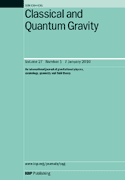
CLASSICAL AND QUANTUM GRAVITY
Connecting Classical Insights with Quantum InnovationsCLASSICAL AND QUANTUM GRAVITY is a prestigious journal published by IOP Publishing Ltd, positioning itself at the forefront of research in the domain of theoretical physics, particularly focusing on gravitational theories in both classical and quantum frameworks. With an impressive Q1 rank in the field of Physics and Astronomy, it has established a significant academic presence since its inception in 1984. This journal offers a platform for disseminating high-quality research findings and critical reviews, playing a pivotal role in advancing our understanding of the foundations of gravitational physics. Researchers and professionals alike will find this scholarly publication an invaluable resource for staying abreast of the latest developments in gravitational theory, quantum gravity, and related interdisciplinary studies. Despite the absence of open access options, its vibrant print and online presence ensures that contributions are accessible to the global scientific community. With a commitment to fostering innovation in an area that remains central to modern physics, CLASSICAL AND QUANTUM GRAVITY continues to attract cutting-edge research that shapes the future of gravitational studies.

LETTERS IN MATHEMATICAL PHYSICS
Exploring the depths of theoretical and practical applications.LETTERS IN MATHEMATICAL PHYSICS, published by Springer, stands as a pivotal platform in the realm of mathematical and statistical physics. With a commitment to disseminating innovative research findings since its inception in 1975, this journal serves both established and emerging scholars by fostering a multidisciplinary dialogue that is vital for the advancement of theoretical concepts and practical applications. The journal boasts an impressive Q1 ranking in both Mathematical Physics and Statistical and Nonlinear Physics categories as of 2023, reflecting its significant impact in these fields, supported by a strong Scopus ranking of 36th and 37th in respective categories. Although it operates on a traditional access model, the journal’s convergence until 2024 ensures a rich repository of literature that aids researchers, professionals, and students in navigating the complexities of mathematical physics. With its strategic location in the Netherlands, LETTERS IN MATHEMATICAL PHYSICS is poised to continue its tradition of excellence, encouraging contributions that deepen the understanding of mathematical frameworks underlying physical phenomena.

EUROPEAN PHYSICAL JOURNAL C
Advancing the Frontiers of Physics and EngineeringEUROPEAN PHYSICAL JOURNAL C (EPJ C), published by SPRINGER, stands as a premier platform for innovative research in the domains of Physics and Engineering. With its Open Access policy established in 2014, EPJ C ensures that groundbreaking findings are readily available to the global scientific community, enhancing accessibility and collaboration. The journal, indexed in prestigious databases, boasts an impressive impact factor and ranks within the Q1 category for both Engineering and Physics and Astronomy, placing it among the top-tier journals in these fields. Celebrated for its rigorous peer-review process, EPJ C offers a wide-ranging scope encompassing various topics in particle physics, quantum field theory, and related interdisciplinary studies. Its consistent publication since 1991 has fostered a vibrant community of researchers dedicated to advancing knowledge and innovation in physics and engineering. Join the scholarly discussion and contribute to the cutting-edge research made possible through EPJ C's esteemed platform.